#malevich
Explore tagged Tumblr posts
Text
1st image:
Punta de Hidalgo lighthouse, by Ramiro Rodriguez-Borlado (1994).
Tenerife - Canary Islands, Spain.
© Roberto Conte (2023)
2nd image:
One of the "arkhitektons" by the Russian artist Kazimir Malevich, a series of models of avant-garde architecture produced from 1923 to the early 1930s and a way to apply to the three dimensions the principles of suprematism.
Moscow, Russia.
© Roberto Conte (2017) Follow me on Instagram


52 notes
·
View notes
Text

Brief history of Omsk (≗ ᆽ ≗)
7 notes
·
View notes
Text
DEADLINE FRIDAY! (Late papers may be considered but please try to submit on time.)
UAAC Session Call for Papers: Left in the Dark
Anna O'Meara, University of Victoria, [email protected]
Panel Session | Session de panel
As Martin Jay explores in Downcast Eyes, metaphors for sight broadly relate to empirical understanding. What kinds of understandings are associated with darkness or shades of black? The dark has diverse transhistorical associations, including black out protests; black holes (Anish Kapoor); race/colorism; chiaroscuro; infinity and cosmos (Malevich); protection (Hinduism); femininity (Taoism); inner light (Kabbalah); and eternal spirit (Jacques-Louis David). While various and sometimes contradictory, certain trends appear somewhat consistently, especially the presence of ontological questions in association with darkness and the shade of black. This session encourages papers that explore transnational and transhistorical themes of darkness in relation to questions of being and nothingness. We welcome sessions both within art and art history and from a variety of disciplines that employ art historical or artistic approaches. We accept both Francophone and Anglophone proposals. This is an in-person session.

16 notes
·
View notes
Photo

Kazimir Malevich - Eight Red Rectangles (1915)
10 notes
·
View notes
Text
Kazimir Malevich, Suprematist Structure Among American Skyscrapers, 1926

#art#avantgarde#architecture#constructivism#russian art#soviet art#malevich#modernism#design#collage#suprematism#kazimirmalevich
35 notes
·
View notes
Text
Why would Kazimir Malevich shift away from Suprematism after the 1920’s?
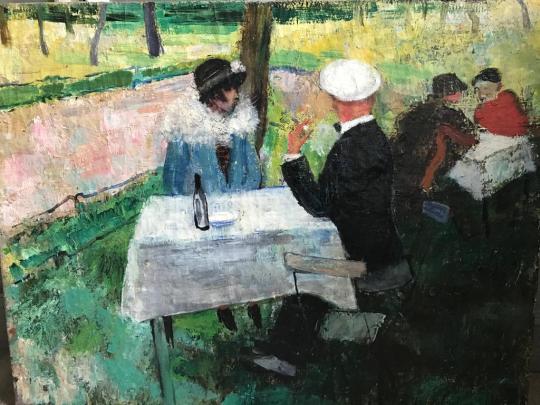
Kazimir Malevich On the Boulevard, canvas, oil. 60.5 x 78, 1929 – 1930 Kazimir Malevich’s evolving relationship with Suprematism in the post-1920s era was influenced by a variety of factors, reflecting a complex interplay of political, personal, and philosophical dynamics.
Politically, the ascent of Joseph Stalin’s regime in Soviet Russia marked a significant shift in cultural policies, favoring Socialist Realism as the sanctioned artistic style. Suprematism’s abstract, non-representational approach clashed with the regime’s preference for art that served propagandistic purposes and depicted idealized Soviet themes. Consequently, Malevich encountered mounting challenges in showcasing and disseminating his Suprematist works within the state-controlled artistic milieu.
However, Malevich’s relationship with Suprematism was not solely defined by external pressures. Internally, he experienced a gradual evolution of his artistic vision and philosophical outlook. While Suprematism had been groundbreaking in its time, Malevich may have felt constrained by its formal constraints and sought new avenues for creative expression. His later works reflected a deeper engagement with spiritual and metaphysical themes, indicating a transition towards a more introspective and contemplative artistic practice.
Moreover, practical considerations likely influenced Malevich’s approach. With Suprematism marginalized within the Soviet art world, Malevich may have pragmatically adapted his artistic output to align with prevailing trends and market demands, ensuring his continued relevance as an artist.
“On the Boulevard” by Kazimir Malevich from the late 1920s to early 1930s, places it squarely within the period when Malevich was shifting away from Suprematism. This painting further exemplifies his departure from the movement.
In “On the Boulevard,” Malevich continues to depart from the strict geometric abstraction of Suprematism, instead incorporating elements of the urban landscape in a more recognizable manner. The use of color and form in this painting suggests a transition towards a more varied and representational style.
By depicting scenes from everyday life, such as people walking along a boulevard, Malevich moves away from the purely abstract concerns of Suprematism and towards a more figurative and narrative-driven approach. This departure from his earlier style reflects his evolving artistic interests and his willingness to explore new avenues of expression.
Overall, “On the Boulevard” serves as another example of Malevich’s shift away from Suprematism during the late 1920s and early 1930s, as he embraced a more diverse and representational approach to painting.
#suprematism#russian artists#avant garde#kazimir malevich#malevich#ifoundmalevich#avantegarde#russianavantgarde#avantagarde#russianavantegarde#avantrgarde#avantgardeart#Malevich#artauction#inonica artnewyork#artlondon#russianart#malévich
8 notes
·
View notes
Text

#illustration#drawing#hand drawn#artwork#artists on tumblr#polish art#cool#b&w#Malevich#support artists i guess
3 notes
·
View notes
Text

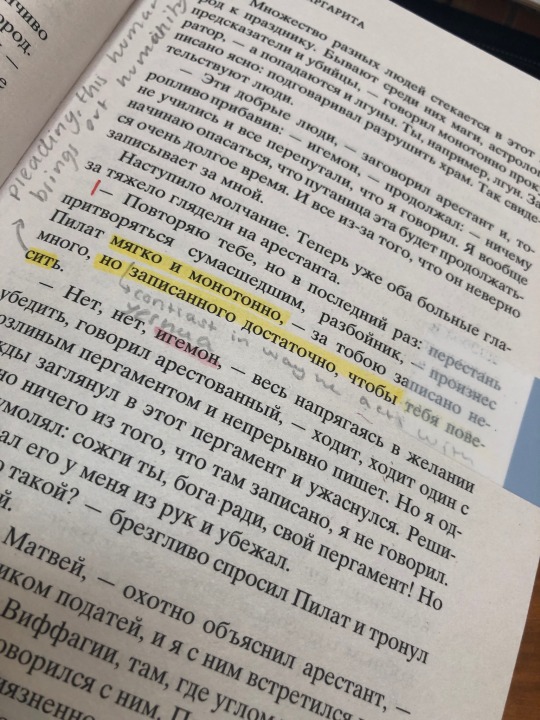
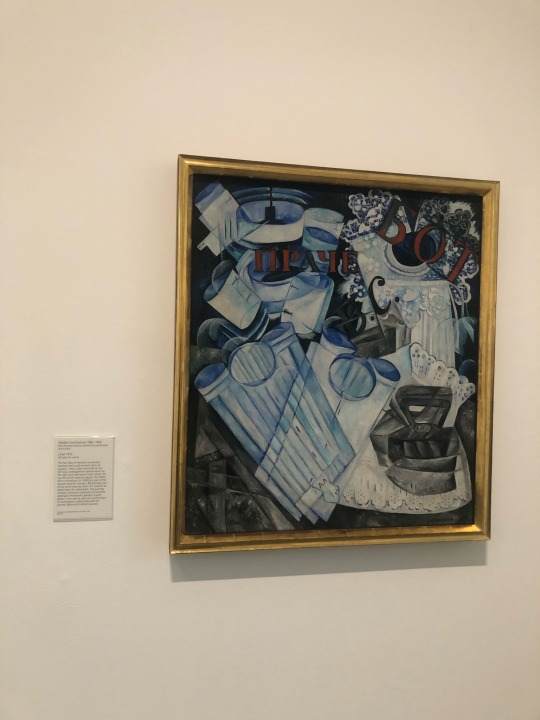
Not been the most productive week but! We move!
To do:
Write Script for coursework
Master and Margarita Readings
Grammar drills
Should be a nice, manageable day!
#studyblr#russian#langblr#languages#slavic languages#university#uni#history#cambridge#soviet art#malevich#goncharova
30 notes
·
View notes
Text

If Malevitch was alive today he would totally make a black square in Illustrator. OK, maybe not. But I think it fits the times that we live in that I did it…
1 note
·
View note
Text

🍋🍋🍋
5 notes
·
View notes
Text

Kazimir Malevich's Arkhitektons
Via: socks-studio.com
2 notes
·
View notes
Text
russia cannot reach a single achievement without Ukraine, and it's proud the most of people who were Ukrainian origin but were russified.
#gogol#malevich#vladimir mayakovsky#tchaikovsky#korolyov#who else#oster#half of 'russian' classical artists
11 notes
·
View notes
Text
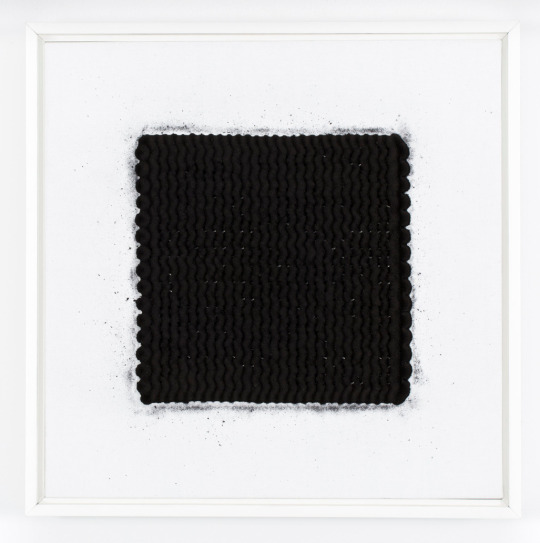
Dark Matter I - Emma Fielden
#art#black square#malevich#dark matter#science#physics#Robert Fludd#et sic in infinitum#and so on to infinity#void#space#painting#abstract#geometry#square#black#geometric abstraction
7 notes
·
View notes
Text

In the years 1919/20 Malevich was still deeply engaged in his Suprematism movement during 1919 and 1920. In fact, this period was significant for him as he continued to develop and refine the principles of Suprematism. Malevich believed in the supremacy of pure artistic feeling over depiction of objects in the visible world, and this period saw him producing some of his most iconic works. Between 1917 and 1918 he created his series of “White on White” paintings. Malevich remained firmly rooted in Suprematism during these years, exploring its principles in depth through his art. One of the results of this you can see in the painting “Suprematism of the Spirit”. File:Suprematism-spirit-1919-1920.jpg – Wikipedia.
Seems that there were several versions made (by him personally?). The museum in Amsterdam has one on wood and the museum in Tel Aviv has one based on that one in Amsteram. But the version I mention above is shown in Unovis No 1 Vitebsk 1920 as annex to the facsimile edition and in Jahrbuch der jungen Kunst, Klinkhardt Biermann in the article of Kallai, Ernst (Konstruktivismus p.375) Leipzig,1924 as well as El Lissitzky/Hans Arp (Die Kunstismen /Les Ismes de L’Art /The Isms of Art) in 1924-1914 Erlenbach Zürich München Leipzig 1925 Pp 23 (illustration 45) etc. (More information available)
#malevich#art#abstractart#suprematism#contemporaryart#modernart#kandinsky#bauhaus#drawing#minimalism#russianavantgarde#rodchenko#abstractpainting#nft#constructivism#digitalart#graphicdesign#kazimirmalevich#cubism#avantgarde#artoftheday#destijl#avantgardeart#lissitzky#painting#abstract#surrealism
2 notes
·
View notes
Text
Lazar Khidekel, Series of Tonal Vertical Architecton, 1927
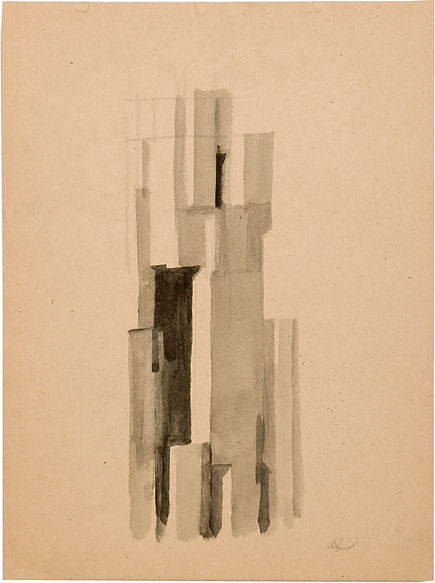

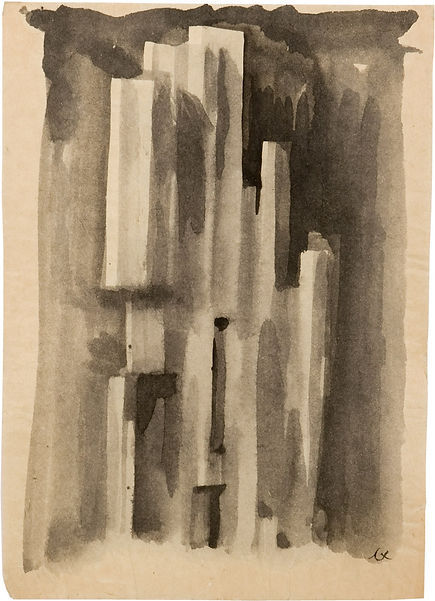
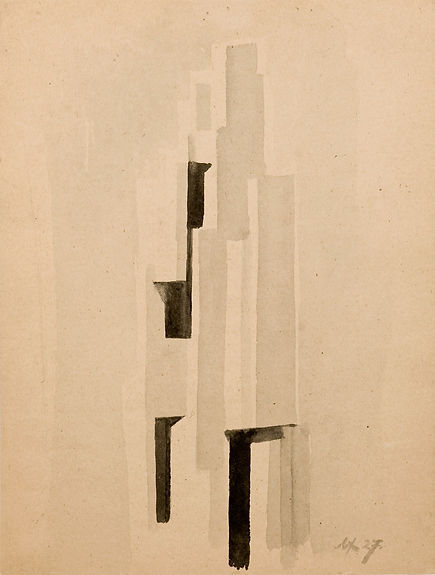
#art#avantgarde#architecture#design#constructivism#russian art#modernism#lazar khidekel#malevich#soviet art#watercolor
21 notes
·
View notes
Text
The importance of the painting “Suprematism of the Spirit" in Kazimir Malevich works.

https://en.m.wikipedia.org/wiki/File:Suprematism-spirit-1919-1920.jpg
Kazimir Malevich initiated the Suprematist movement in the early 20th century. It emerged as a response to the changing artistic landscape and the societal upheavals of the time. Malevich, like many avant-garde artists of his era, was searching for new ways to express the modern experience and break away from traditional artistic conventions.
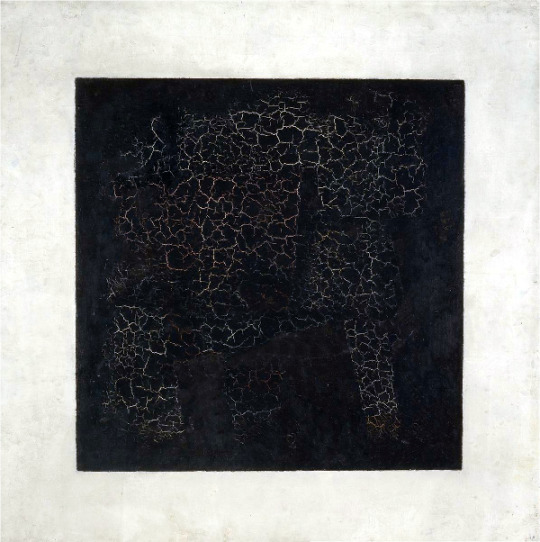
Suprematism began to take shape in Malevich's work around 1913, but it fully came into its own with the exhibition of his famous "Black Square" painting in 1915. This iconic artwork marked a radical departure from representational art and embraced pure abstraction. Malevich believed that art should transcend the material world and instead explore the realm of pure feeling and sensation.
Malevich's Suprematism was a bold attempt to redefine the nature of art and its relationship to the modern world. Through his groundbreaking work and writings, he laid the foundation for abstract art movements that would follow in the 20th century.
"Suprematism of the Spirit" is one of Kazimir Malevich's significant works within the Suprematist movement. To understand how he arrived at this painting, it's crucial to trace the evolution of his artistic ideas and style within Suprematism.
Malevich's journey in Suprematism was marked by a progression towards increasingly abstract and geometric forms, as well as a deeper exploration of the spiritual dimensions of art. "Suprematism of the Spirit" reflects this culmination of his artistic vision.
In the years following the creation of his seminal work "Black Square" in 1915, Malevich continued to refine his ideas and experiment with geometric abstraction. His Suprematist compositions became more complex, incorporating a variety of shapes, lines, and colors arranged in dynamic compositions.
By the time he painted "Suprematism of the Spirit," likely in 1919 or 1920, Malevich had fully embraced Suprematism as a means of expressing the spiritual essence of art. The title itself suggests a departure from the purely material or formal concerns of earlier Suprematist works towards a deeper exploration of metaphysical themes.
"Suprematism of the Spirit" may feature a composition dominated by geometric shapes and bold colors, typical of Malevich's Suprematist style. However, it also likely conveys a sense of transcendence and inner harmony, reflecting Malevich's belief in the ability of art to evoke spiritual truths beyond the material world.
Overall, "Suprematism of the Spirit" represents the culmination of Malevich's artistic journey within the Suprematist movement, where he sought to push the boundaries of abstraction and express the ineffable through geometric forms and color.
-----------------------------------
Note: There are 3 different versions published one at the thejewishmuseum.org which seems to be a copy of the one at the Stedelijk Museum, Amsterdam (on wood panel), and the original (oil on canvas) we show here which is based on the following sources: Unovis No 1 Vitebsk 1920 Annex to the facsimile edition
Jahrbuch der jungen Kunst Klinkhardt - Biermann The article Ernst Kallai: Konstruktivismus p.375) Leipzig,1924
Презентация PowerPoint El Lissitzky/Hans Arp Die Kunstismen /Les Ismes de L’Art /The Isms of Art 1924-1914 Erlenbach Zürich München Leipzig 1925 Pp 23 (ill 45) Encyclopedia of Russian avant-garde. Biographies Russian edition, pp153, volume II A.Sarabyanov, V.Rakitin Encyclopedia of Russian avant-garde Online edition. Website: http://rusavangard.ru/online/
Diplomatic World, International magazine No57, summer 2018 pp 140-141 A.Sarabyanov The Paths and Forks of the Russian Avant-Garde, Publishing house: Iskusstvo-XXI vek The World as Objectlessnes The Birth of a New Art, Yeltsin Center, Yekaterinburg November 5TH, 2021 — February 20TH 2022 Curators: Andrey Sarabyanov, Natalia Murray Jewish Museum and Tolerance Center, Moscow October 19TH, 2022 — February 19TH 2023 Curators: Andrey Sarabyanov, Natalia Murray
#artlovers#art#artcollector#arte#artistonlinkedin#abstractart#modernart#design#contemporaryart#originalart#impressionism#pastelartist#painting#artgallery#dailypainter#dailymotivation#dailyart#artbuyer#artforinteriors#buyart#artforyourwalls#artdecor#avantegarde#russianavantgarde#avantagarde#russianavantegarde#avantrgarde#avantgardeart#Malevich#suprematism
5 notes
·
View notes